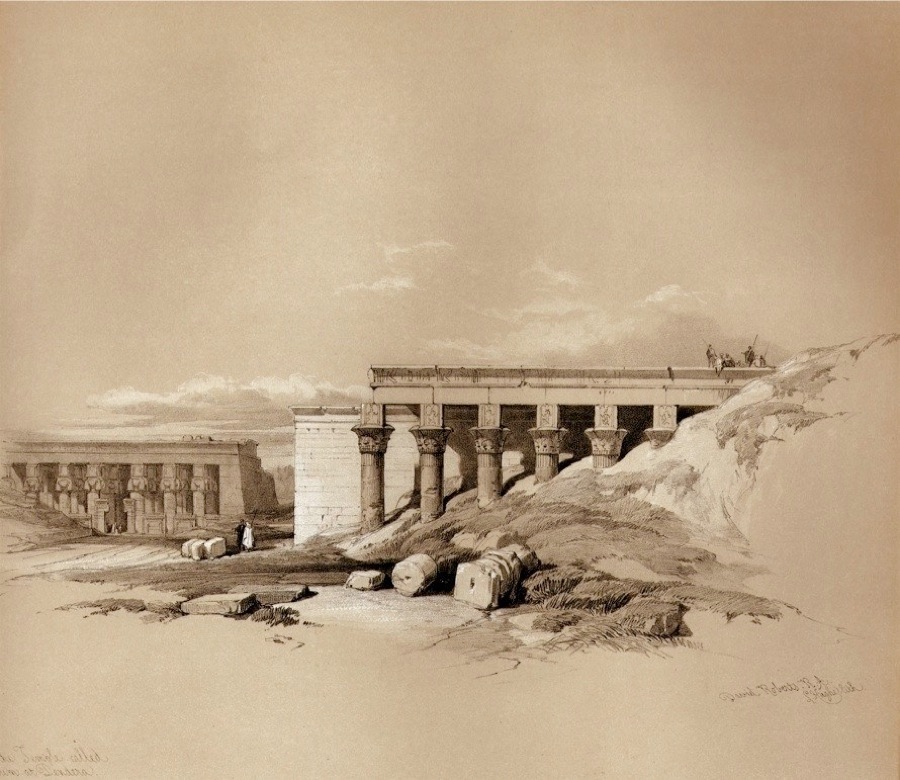LATERAL VIEW OF THE TEMPLE CALLED THE TYPHONÆUM AT DENDERA.
THESE ruins stand to the right of the great Temple as the grand portico is approached from the Nile; much of it lies buried under the ruins of Arab huts, which from age to age have been raised and have crumbled above those of former habitations: the ready and costless material of the mud of the Nile making it easier to rebuild a new habitation than repair an old one.
This Temple consists of two outer passage-chambers, with two smaller rooms on either side of the outermost, and a central and two lateral adyta, the whole surrounded, except the front, by a peristyle of twenty-two columns. Including the colonnades, the Temple is about seventy feet wide and eighty feet long. The columns are surmounted above the lower capitals with hideous representations of the monster Typhon, or the Evil Genius, whence Stabo gave to this Temple the name of Typhonæum. From the base of the columns to the roof is thirty-three feet; and here, as in the great Temple, the whole surface is covered with hieroglyphics, and enriched with sculptures, sometimes of Typhon, with all his horrors enlarged – short and stunted, with wrinkled face and death-like grin; but more frequently the representations are of Isis and Horus, and of women and children in groups, as if the Temple were dedicated to maternity.
Amidst the rubbish and débris of ancient Tentyris no stone could be found that did not belong to the temples, which appear to have once had a wall that enclosed the whole of them.
All other building material of the domestic structures seems to have been of sun-burnt brick, and must have left the gorgeous Temple a striking contrast to such miserable habitations.
Roberts’s Journal.


